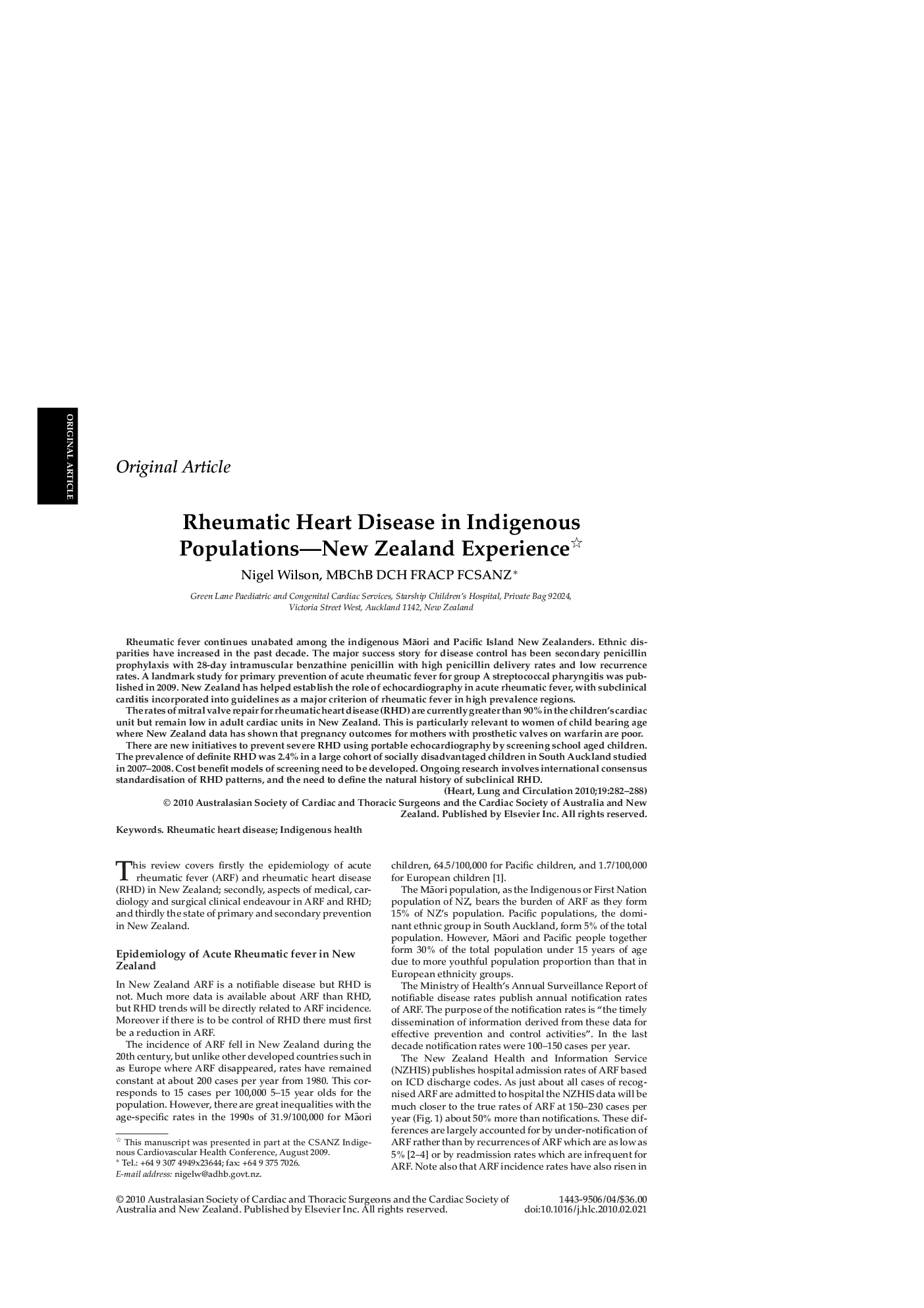| Article ID | Journal | Published Year | Pages | File Type |
|---|---|---|---|---|
| 2920827 | Heart, Lung and Circulation | 2010 | 7 Pages |
Rheumatic fever continues unabated among the indigenous Māori and Pacific Island New Zealanders. Ethnic disparities have increased in the past decade. The major success story for disease control has been secondary penicillin prophylaxis with 28-day intramuscular benzathine penicillin with high penicillin delivery rates and low recurrence rates. A landmark study for primary prevention of acute rheumatic fever for group A streptococcal pharyngitis was published in 2009. New Zealand has helped establish the role of echocardiography in acute rheumatic fever, with subclinical carditis incorporated into guidelines as a major criterion of rheumatic fever in high prevalence regions.The rates of mitral valve repair for rheumatic heart disease (RHD) are currently greater than 90% in the children's cardiac unit but remain low in adult cardiac units in New Zealand. This is particularly relevant to women of child bearing age where New Zealand data has shown that pregnancy outcomes for mothers with prosthetic valves on warfarin are poor.There are new initiatives to prevent severe RHD using portable echocardiography by screening school aged children. The prevalence of definite RHD was 2.4% in a large cohort of socially disadvantaged children in South Auckland studied in 2007–2008. Cost benefit models of screening need to be developed. Ongoing research involves international consensus standardisation of RHD patterns, and the need to define the natural history of subclinical RHD.
